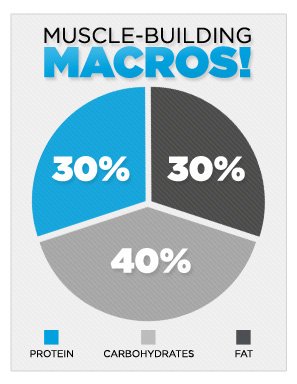Q. What's the ideal macronutrient ratio for building muscle? Do you have a perfect muscle-building meal that fits?

{{caption}}
To gain the most muscle with the least amount of fat (or even sparking some fat loss), I like to use the calorie breakdown of 40 percent carbohydrates, 30 percent protein and 30 percent fat.
This is the overall breakdown for the day, but during the day not all meals will follow this structure. Why? Throughout the day, your fueling needs change with your body's ability to optimally process and use different types of fuels.
A solid approach to nutrient timing allows us to give our body what it needs at the right time of day, which results in better body composition changes.
Timing Is Everything
Let's take the example of a person who trains in the morning. Directly after training, his body will be a sponge waiting to soak up carbohydrates (due to the insulin-sensitizing effects of exercise) in order to start the rebuilding and regeneration process.
In this situation, a high-carbohydrate, low-fat meal is warranted. This kind of meal will meet the body's needs quickly, with lower fat expediting digestion.
At dinner time, our sample muscle builder has different needs. His body hasn't trained in several hours and his glycogen stores are essentially refilled. He doesn't need the same fast-acting, high-octane fuel as he did eight hours prior.
Instead, dinner needs to contain adequate protein to continue to drive protein synthesis and recovery, fiber for satiety, and some surplus calories. So this meal should be high in protein, high in fat, and low in carbs.
Throughout the day, between post-workout meals and the last meal of the day, the amount of fast-acting grain and starch-based carbohydrates should decrease, while the amount of fat and vegetables increase. Protein intake can stay constant across all meals.
This approach to muscle building will take advantage of your body's time-dependent changes in biochemistry, allowing you to get big while staying lean.
Perfect Muscle-Building Breakfast: Cranberry-Almond Oatmeal

{{caption}}
Perfect Muscle-Building Dinner: Flank Steak with Mushrooms and Onions

{{caption}}

